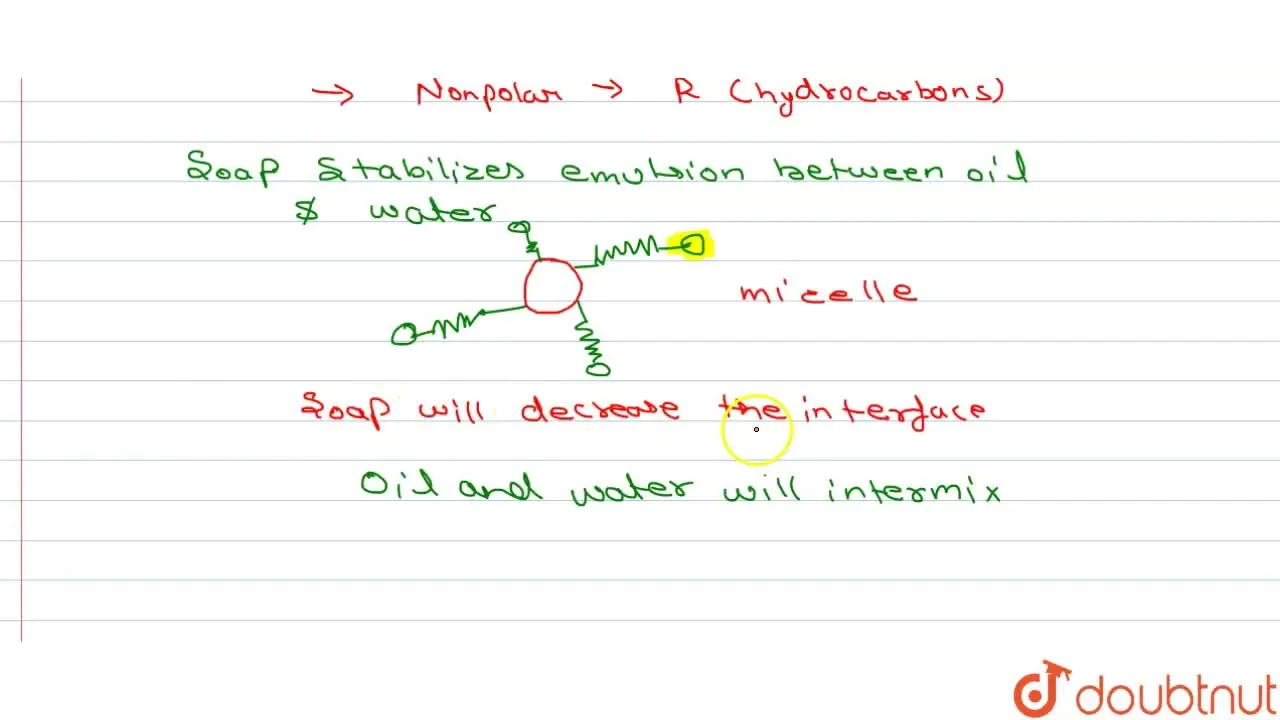Action of soap is due to emulsification and micelle formation. Comment.
Soap is sodium or potassium salt of a higher fatty acid and mat be represented as RCOO−Na+ (e.g., sodium stearate CH3(CH2)16COO−Na+ which is a major component of many bar soaps). When dissolved in water, it dissociates into RCOO− and Na+ ions. The RCOO− ions, however, consist of two parts a long hydrocarbon chain R (also called non-polar 'tail') which is hydrophobic (water repelling), and a polar group COO− (also called polar -ionic 'head'), which is hydrophilic (water loving).
The RCOO− ions are, therefore, present on the surface with their COO− groups in water and the hydrocarbon chains R staying away from it and remain at the surface. But at critical micellel concentration, the anions are pulled into the bulk of the solution and aggregate to form a spherical shape with their hydrocarbon chains pointing towards the centre of the sphere with COO− part remaining outward on the surface of the sphere. An aggregate thus formed is known as 'ionic micellel'.
The cleansing action of soap is due to the fact that soap molecules form micellel around the oil droplet in such a way that hydrophobic part of the stearate ions is in the oil droplete ad hydrophilic part projects out of the grease droplet like the bristles. since the polar groups can interact with water, the oil droplet surrounded by stearate ions is now pulled in water and removed from the dirty surface. Thus soap helps in emulsification and washing away of oils and fats. The negatively charged sheath around the globules prevents them from coming together and forming aggregates.

(a) Grease on cloth
(b) Sterate ions (from soap) arranging aroung the grease droplets
(c) Micellel formed
Related Playlists
Similar Questions
During micelle formation :
View SolutionMicelle formation occurs in :−
View SolutionMicelles formation takes place
View SolutionPassivity of iron is due to formation of:
View SolutionWhy does micelle formation take place when soap is added to water? Will a micelle be formed in other solvents such as ethanol also?
View SolutionRing structure of glucose is due to formation of hemiacetal and ring formation between
View SolutionMolar conductivity (L) m of aqueous solution of sodium stearate, which behaves as a strong electrolyte, is recorded at varying concentrations (c) of sodium stearate. Which one of the following plots provides the correct representation of micelle formation in the solution?
(Critical micelle concentration (CMC) is marked with an arrow in the figures)View SolutionWhich of the following will show Tyndall effect?
a.Aqueous solution of soap below critical micelle concentration
b.Aqueous solution of soap above critical micelle concentration
c.Aqueous solution of sodium chloride
d.Aqueous solution of sugarView SolutionThe cleansing action of soap is due to the
View SolutionIn the soap micelles
View Solution


